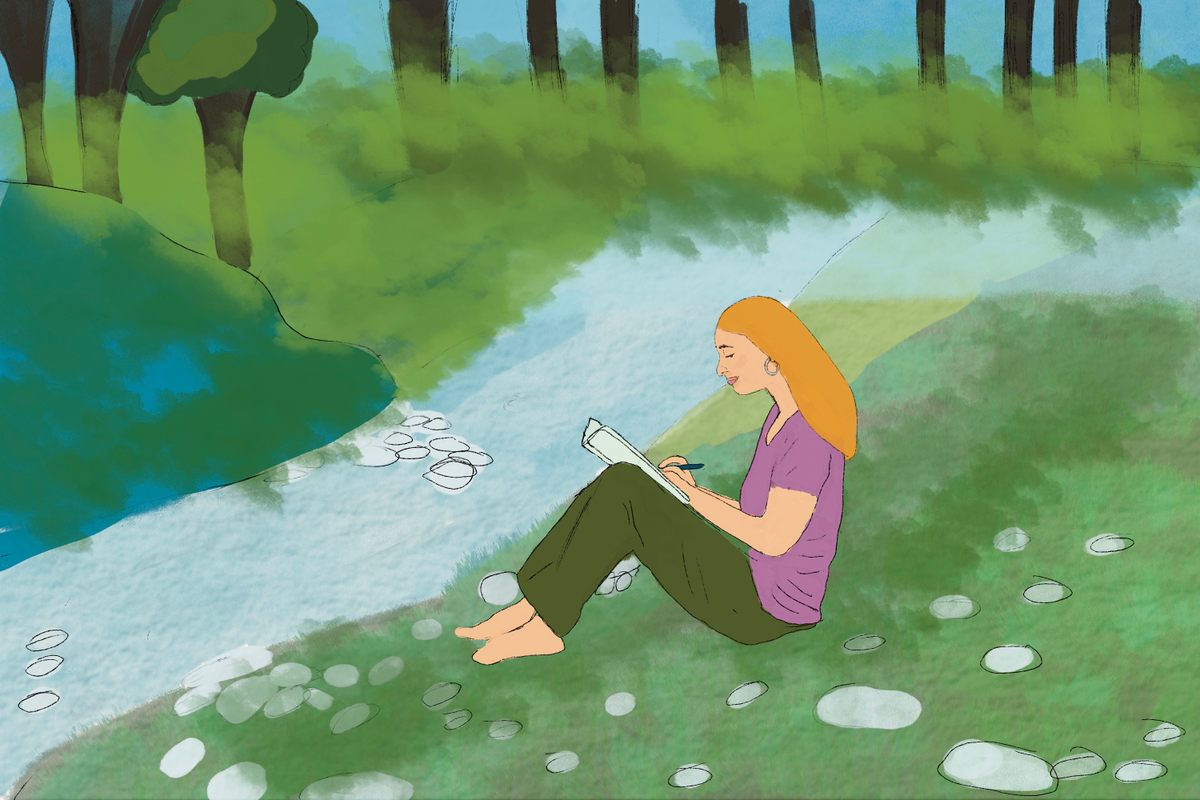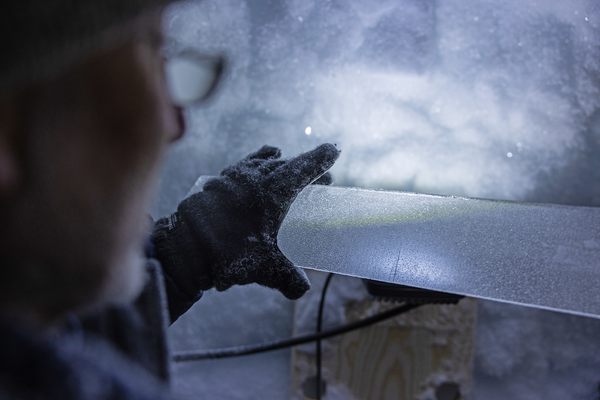How to Reconnect With Nature Through Writing
Whether you’re in the wilderness or a city park, being present with other beings can be deeply fulfilling.
Exploring the outdoors as a child at summer camp often meant splashing in a lake, tromping along a trail, or sharing s’mores with fellow campers as night fell. There’s a different way to be present in nature, however, one that can be transformative both for you and the audience you share your experiences with. We asked Atlas Obscura Course Instructor Vanessa Chakour, a naturalist, visual artist, and author, including of the upcoming Earthly Bodies: Embracing Animal Nature, how to get started.
The wild is calling, and writing offers a powerful tool for reconnection. By taking the time to observe and reflect on our outdoor experiences, we begin to notice intricate details we might have otherwise missed: the delicate veins of a violet flower, the cool embrace beneath a linden tree in summer, or the haunting melody of a wood thrush. Through keen observation and evocative language, we can translate this wild beauty onto the page while fostering a deeper connection with our environment. The practice of nature writing can awaken our sense of wonder and a new appreciation for the living world around us. Whether poetry or prose, we can weave sensory details and personal experiences together to transport readers to the wild.
The first step is slowing down, and the good news is, you don’t need to escape to a bucolic, remote landscape. Nature is everywhere, even in the heart of a bustling city. This became especially clear during my early forays into nature journaling in New York City. Sitting in Prospect Park, Brooklyn, I was captivated by the abundance of mugwort, a common plant I’d seen countless times before. Newly fascinated after learning about the plant’s medicinal uses, I wrote about mugwort, and from mugwort’s perspective, imagining their stories and role in the urban ecosystem.

Now, let’s explore some practical tips to embark on your own wild writing journey:
Sharpening Your Senses: The Key to Deeper Connection
The first step is cultivating a keen awareness of your surroundings. By honing your senses, you’ll capture the essence of a plant or place in vivid detail, drawing your reader into the experience. Imagine describing a forest after a summer rain: What can you see (dewdrops clinging to ferns, sunlight filtering through the leaves), smell (the earthy scent of damp soil, the freshness of pine needles), feel (the cool, damp air, soft moss beneath your fingertips), taste (maybe the tangy sweetness of a wild berry), touch (the rough bark of a tree, the smooth surface of a stone)? Sensory details create a visceral experience, bringing both you and the reader into the heart of the forest.
Nature Journal: Your Gateway to Deeper Intimacy
A simple yet powerful tool to sharpen your senses and deepen your connection with nature is the humble nature journal. Choose a dedicated notebook and start by listing what you see, hear, and feel around you. Aim for at least five observations in each sensory category per day, jotting down details about the sights (e.g., intricate spider webs), sounds (the rustle of leaves), and sensations (warm sun on your face). Even the simplest notes can train your attention to detail, attune your senses, and create a strong sense of place. These lists can then serve as springboards for crafting energetic descriptions in your writing.
Exploring a Single Aspect: Strength in Constraint
Limiting your focus to a single being in your environment can lead to powerful and focused writing. This constraint fosters a deeper intimacy between you and your fellow creature, whether a resilient dandelion pushing through a crack in the sidewalk, or a peculiar, otherworldly mushroom. Immerse yourself in observation, using all your senses to capture their unique details. By delving deeply into this nature-being’s intricacies, you gain a richer understanding and appreciation for their existence. This focused exploration allows you to translate your experience into captivating writing, and may even inspire you to become a voice for this fascinating creature.


Unearthing Layers: The Role of Research
Nature writing often blends personal observations with scientific facts and philosophical reflections. Strong poetry or prose seamlessly integrates research with your experience. Your research can take many forms: reading scientific papers, consulting field guides, or talking to local experts, such as naturalists or park rangers. Did you encounter a curious bird call that compelled you to learn more? Researching the bird species can not only help you identify their song but also reveal their fascinating ecological relationships and specific needs to thrive. This newfound knowledge can be woven into your writing, enriching your narrative and your relationship with the local ecosystem. Interesting facts can enhance understanding and add depth, but don’t let research overwhelm your writing. Be sure your unique voice resonates throughout your work.
Shifting Perspective: Fostering Empathy
Nature writing isn’t just about humans observing nature. It can also be about experiencing the natural world from a different perspective. Here are some exercises to try:
Write a letter to your wild kin: Choose a plant, animal, or natural element you feel close to. Write a letter to them expressing your gratitude, recalling a shared memory or maybe a recent lesson learned. Imagine how they might respond.
Expand Your Sensory Awareness: Continue your sensory observations, but widen their scope. Imagine how the world might appear through the eyes and ears of your chosen creature, or from another element of nature. How does a pollinator observe their surroundings compared to you? Consider the textures, sounds, and smells they might experience differently. They also have stories to tell.
Nature writing is a journey of continuous discovery. Keep writing, keep exploring your local environment, and keep rewilding yourself by deepening intimacy with the natural world. Share your experiences with others, and remember, even the smallest backyard can be a haven for wonder and inspiration.





















Follow us on Twitter to get the latest on the world's hidden wonders.
Like us on Facebook to get the latest on the world's hidden wonders.
Follow us on Twitter Like us on Facebook